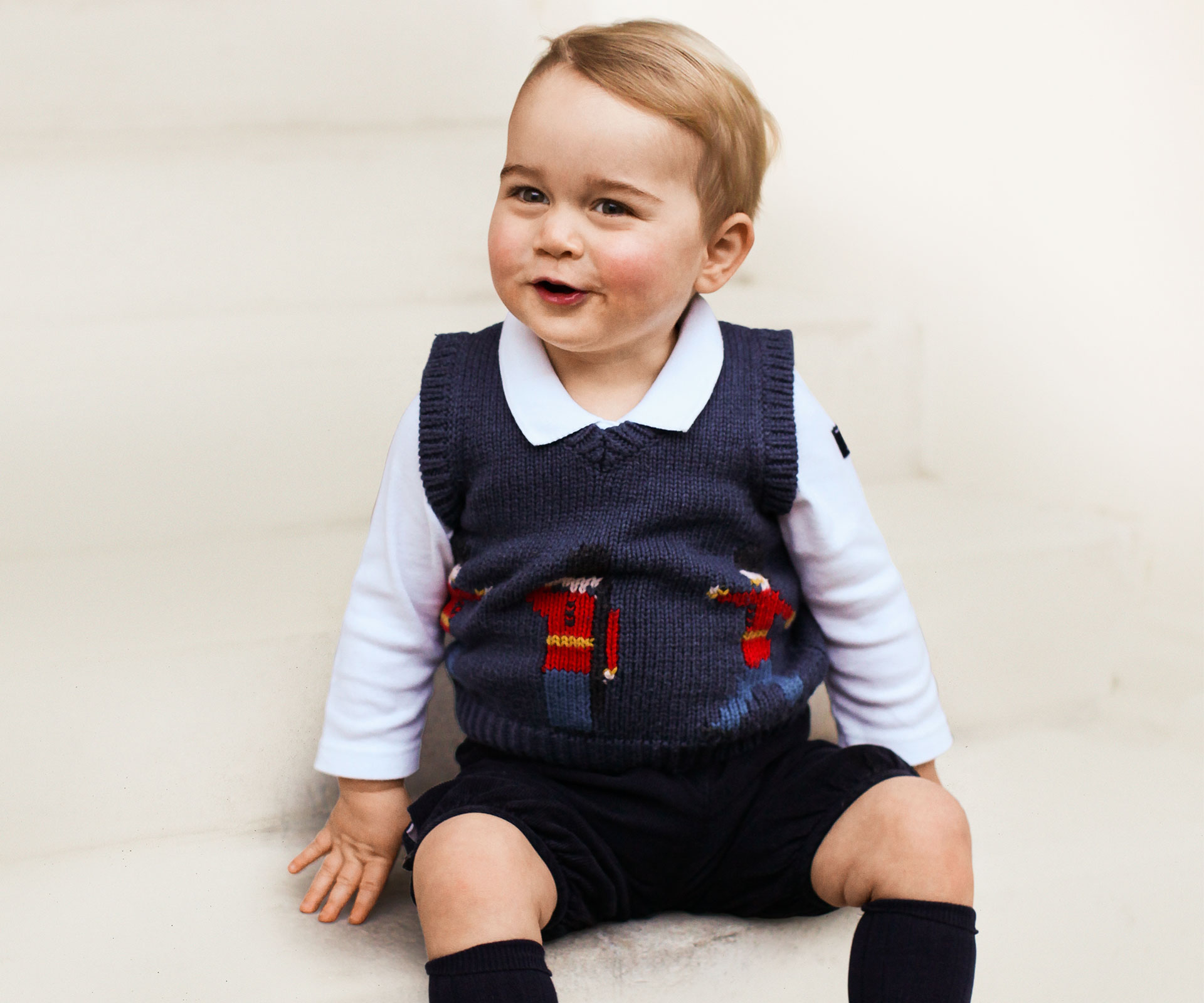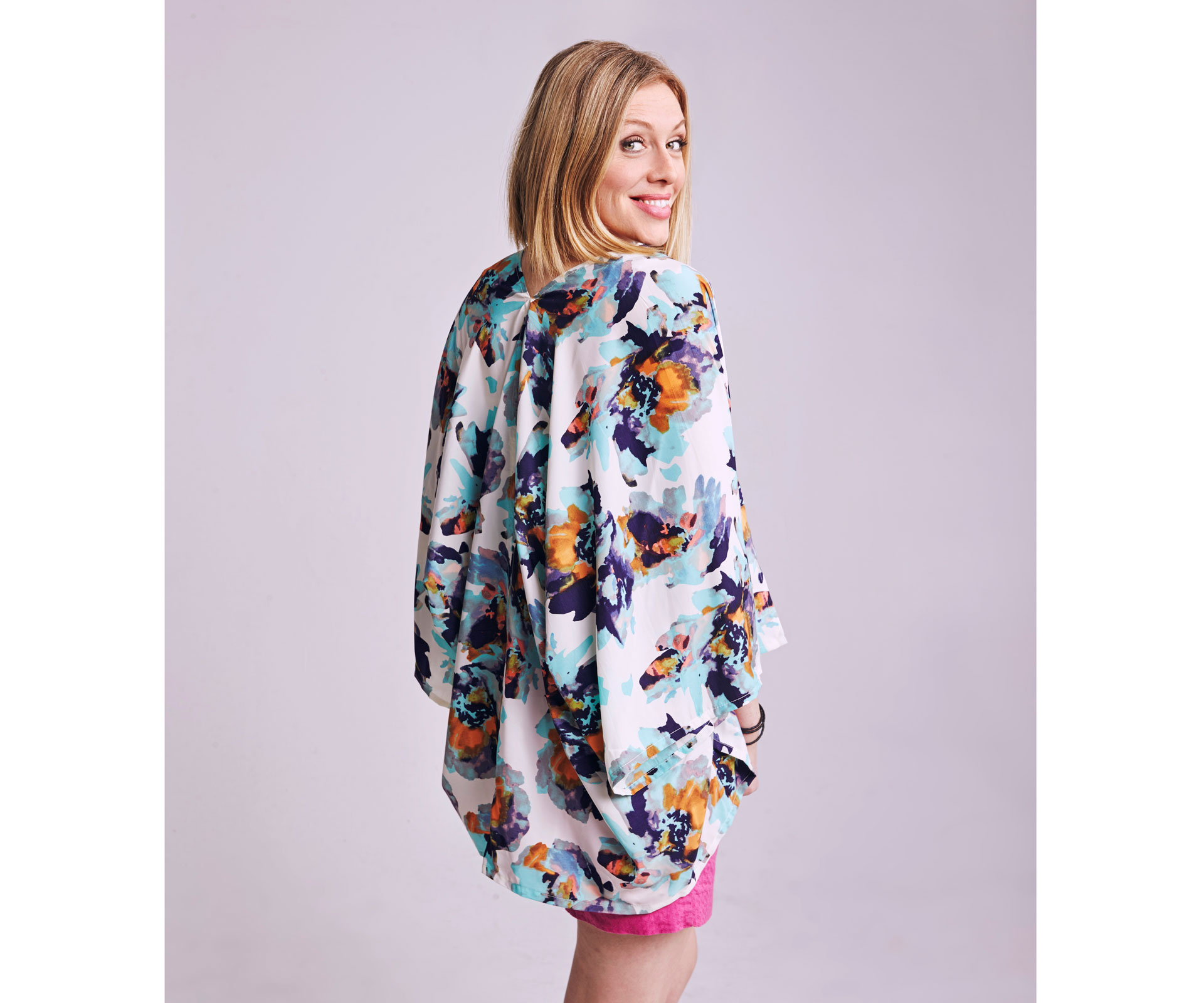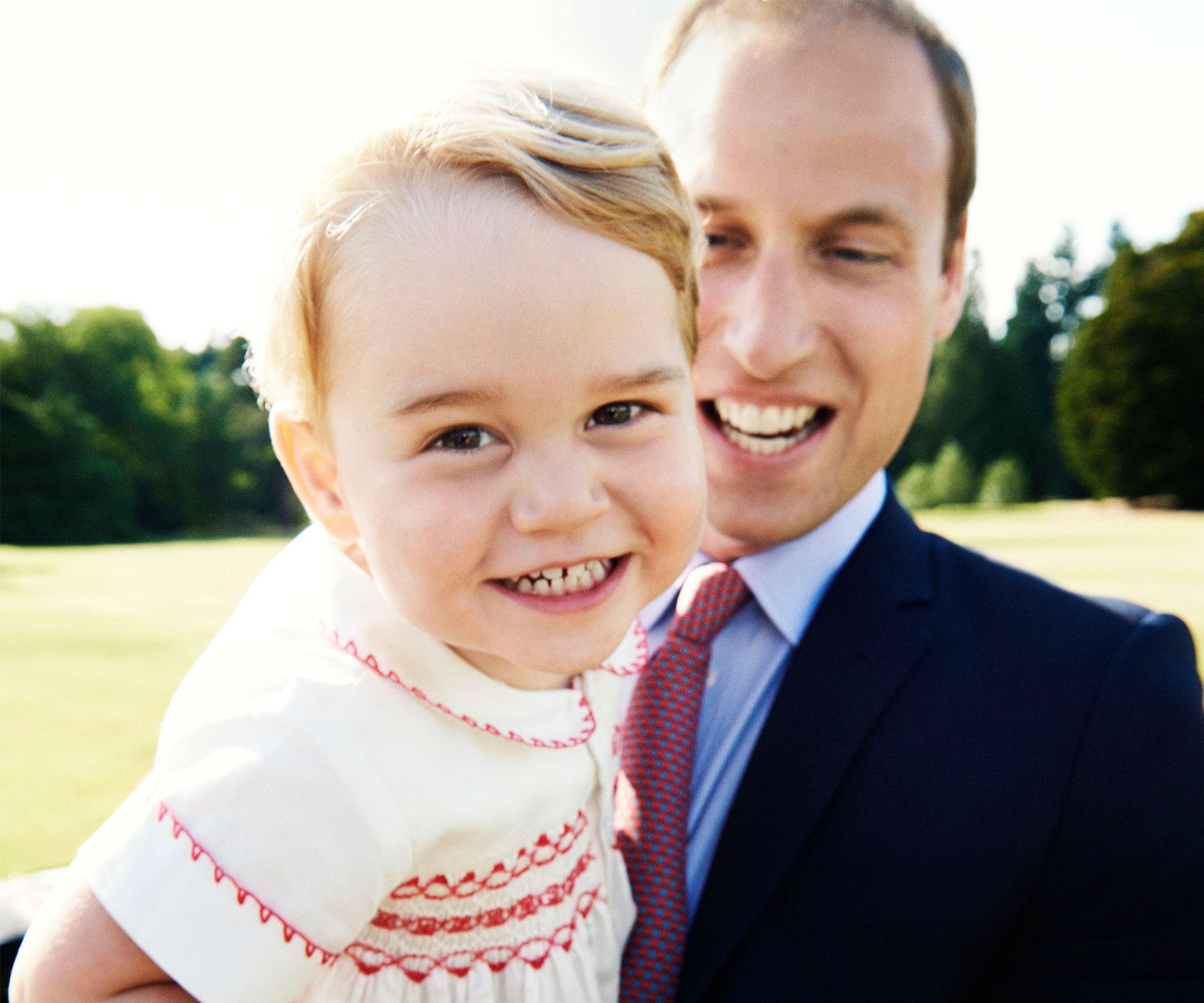Vest with embroidered soldiers
✽ ✽ ✽ Intermediate knitting
Measurements
Years: 1, 2, 3, 4
To fit chest (cm): 53, 55, 58, 60
Actual size (cm): 56, 59, 62, 65
Length (approx. cm): 35, 37, 39, 41
Yarn
MERINO 4 PLY 50g balls (we used Patons Patonyle)
Main colour, Navy (M – 1002): 2, 3, 3, 3
1 ball each of Sand (1003), Canary (1031), Sunset (1030), Electric Blue (1026) and Black (1001) for soldier embroidery.
Needles and extras
1 pair each 3mm and 3.25mm knitting needles or size needed to give correct tension
1 stitch-holder
Wool needle for sewing seams and embroidery
Tension
28 sts and 36 rows to 10cm over stocking st, using 3.25mm needles. To work a tension square using 3.25mm needles, cast on 42 sts. Work 54 rows stocking st. Cast off loosely. Check your tension carefully. If less sts to 10cm, use smaller needles; if more sts, use larger needles.
Abbreviations
alt = alternate
approx = approximately
beg = begin, beginning
cm = centimetres
cont = continue
dec = decrease, decreasing
foll = follows or following
K = knit
0 = zero – no sts, times or rows
P = purl
psso = pass slipped st over
rem = remains, remaining
rep = repeat, repeating
sl = slip
st/s = stitch/es
stocking st = knit right side rows, purl wrong side rows
tbl = through back of loop
tog = together
ybk = yarn back – take yarn under needle from purling position into knitting position, without making a st.
Back
Using 3mm needles and M, cast on 81 (85, 89, 93) sts.
1st row: K2, P1, K1, rep from to last st, K1.
2nd row: K1, P1, K1, rep from to end.
Rep 1st and 2nd rows 9 times (20 rows rib in all).
Change to 3.25mm needles.
Work in stocking st until Back measures 21 (23, 24, 26) cm from beg, ending with a purl row.

Completed vest and graph with key.
Shape armholes
Cast off 6 (7, 7, 8) sts at beg of next 2 rows … 69 (71, 75, 77) sts. **
Dec one st at each end of next row, then in every foll alt row 6 times … 55 (57, 61, 63) sts.
Work 27 (29, 33, 33) rows.
Shape back neck
Next row: K16 (16, 18, 19), turn.
Cont on these 16 (16, 18, 19) sts for right side of back neck.
Dec one st at neck edge in next 5 rows …
11 (11, 13, 14) sts.
Shape shoulder
Next row: Cast off 4 (4, 5, 6) sts, knit to last
2 sts, K2tog … 6 (6, 7, 7) sts.
Next row: P2tog, purl to end.
Cast off rem sts.
Slip next 23 (25, 25, 25) sts onto stitch-holder and leave for neckband.
With right side facing, join M to rem 16 (16, 18, 19) sts for left side of back neck and knit to end.
Dec one st at neck edge in next 6 rows …
10 (10, 12, 13) sts.
Shape shoulder
Next row: Cast off 4 (4, 5, 6) sts, purl to last
2 sts, P2tog … 5 (5, 6, 6) sts.
Work 1 row.
Cast off rem sts.
Front
Work as for Back to **.
Dec one st at each end of next row.
Work 1 row.
Rep last 2 rows 0 (0, 1, 1) times … 67 (69, 71, 73) sts.
Shape V neck
Next row: K2tog, K31 (32, 33, 34), turn.
Cont on these 32 (33, 34, 35) sts for left side of neck.
*** Dec one st at each end of every foll alt row until 22 (23, 26, 27) sts rem.
Dec one st at neck edge only in every foll alt row until 11 (11, 14, 15) sts rem, then in every foll 4th row until 9 (9, 11, 12) sts rem.
Work 3 rows.
Shape shoulder
Cast off 4 (4, 5, 6) sts at beg of next row.
Work 1 row.
Cast off rem 5 (5, 6, 6) sts. ***
Slip centre st onto a safety pin or contrasting thread and leave for neckband.
With right side facing, join M to rem 33 (34, 35, 36) sts for right side of neck.
Next row: Knit to last 2 sts, K2tog.
Rep from x to x, working 4 rows instead of 3 before shoulder shaping.
Neckband
Using mattress stitch, join right shoulder seam. With right side facing, using 3mm needles and M, knit up 44 (46, 48, 48) sts evenly along left side of front neck, knit st from safety pin or thread (centre st), knit up 44 (46, 48, 48) sts evenly along right side of front neck to shoulder seam, knit up 7 sts evenly along right side of back neck, knit across sts from back stitch-holder, then knit up 7 sts evenly along left side of back neck … 126 (132, 136, 136) sts.
1st row: K1, P1, rep from to end.
2nd row: Rib to within 2 sts of centre st, ybk, sl 1, K1, psso, K1 (centre st), K2tog, rib to end.
3rd row: Rib to within 2 sts of centre st, K2tog, P1, K2tog tbl, rib to end.
Rep 2nd and 3rd rows 4 times … 106 (112, 116, 116) sts.
Cast off loosely in rib.
Armhole bands
Join left shoulder and neckband seam. With right side facing, using 3mm needles and M, knit up 93 (99, 105, 107) sts evenly along armhole edge.
Work 11 rows rib as for Back, beg with a 2nd row.
Cast off loosely in rib.
To make up
Using Knitting Stitch and following graph (see right), embroider soldiers on front of vest beg 2 rows above rib and leaving 10 (12, 12, 14) sts between base of each soldier. Join side and armhole band seams. Press embroidery lightly with a damp cloth on the wrong side.
Knitting stitch embroidery
Begin at lower edge of graph on the right-hand side. Using a tapestry needle or wool needle, bring the needle from the back through the centre of the stitch below the one to be covered.
When working from right to left, take needle from right to left under both strands of stitch above the one to be covered.
Take the needle back through the centre of the original stitch and out through the centre of the stitch on the left.
You have worked one knitting stitch. Repeat these steps, following the graph for the required number of stitches. To finish the stitch, take needle back into the centre of the stitch and through to the back of the work.
To begin the second row, bring needle from back to centre of stitch below the one to be covered. Working from left to right, take needle under both strands of stitch in the row above one to be covered, from left to right (instead of from right to left).
Take needle back into the centre of the stitch, then go from left to right under 2 strands, which will bring the needle across into the centre of the next stitch to the right.
When working stitch above the one worked in the previous row, your needle will come up in the centre of this worked stitch.
Repeat these steps, following the graph for the number of stitches worked.
Pattern and graph: Supplied by Patons, patonsyarns.com.au
Photos: Getty Images, Still-Life Photography by Chris Jensen


